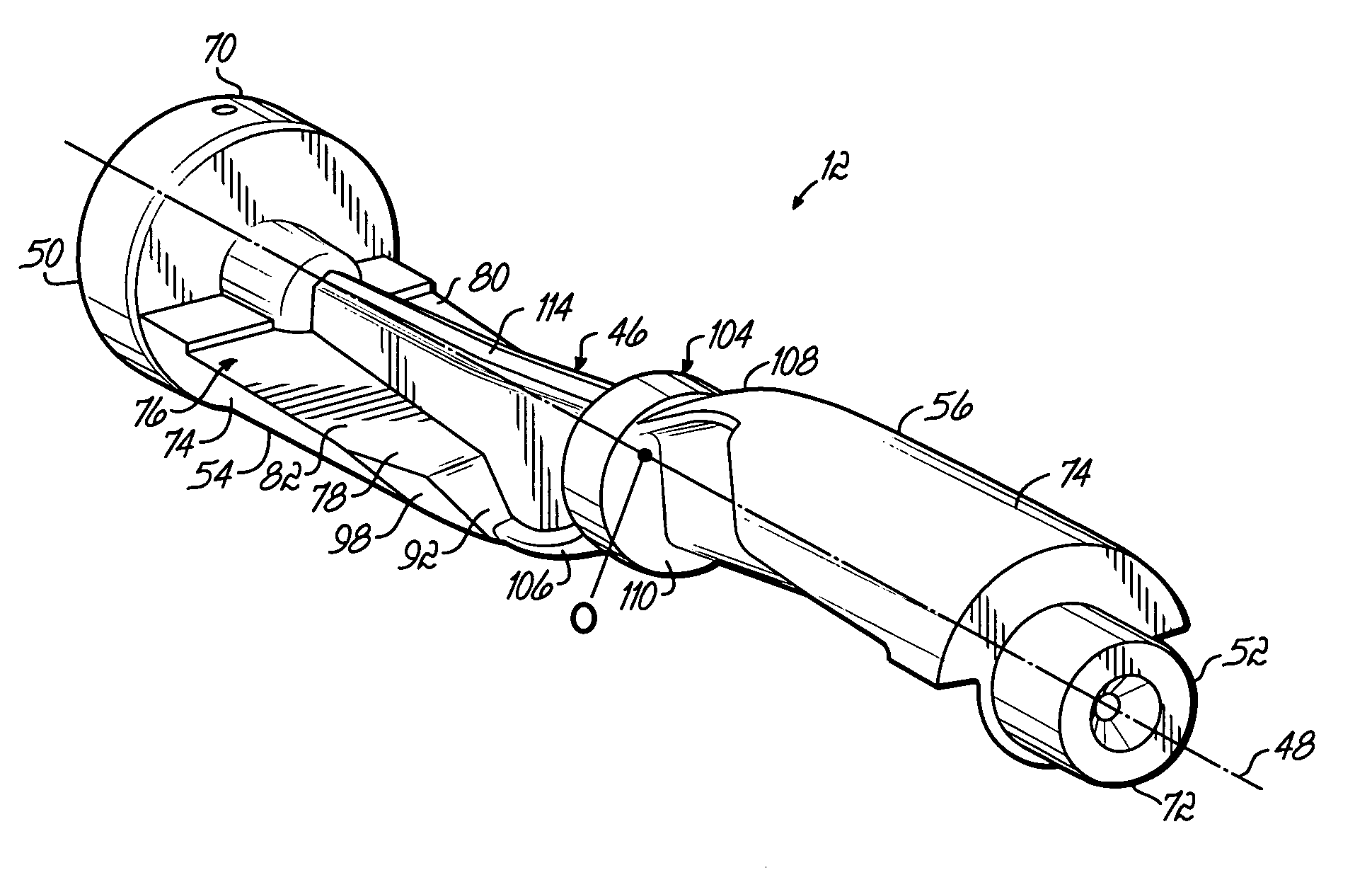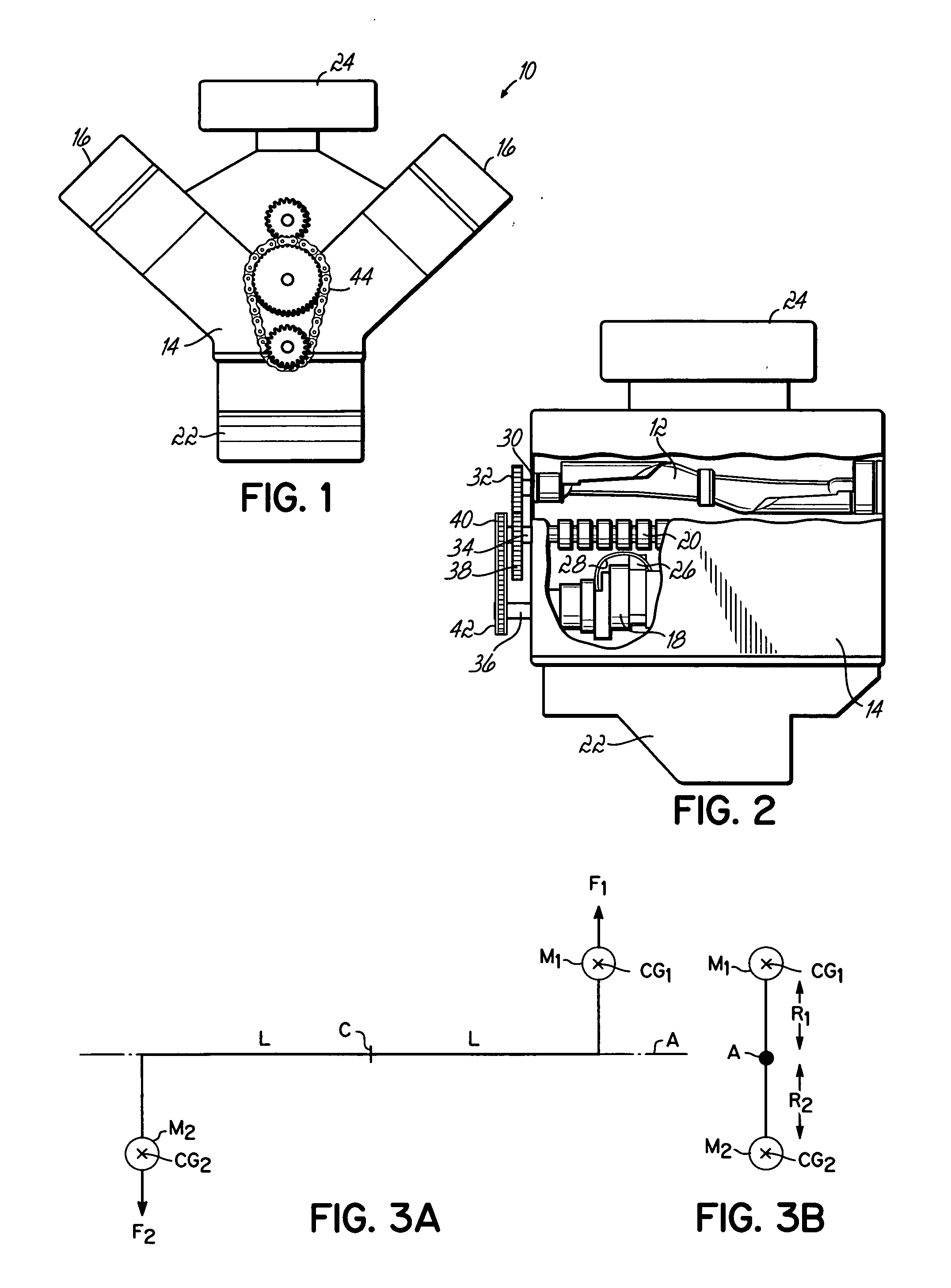Balance shaft
- Summary
- Abstract
- Description
- Claims
- Application Information
AI Technical Summary
Benefits of technology
Problems solved by technology
Method used
Image
Examples
Embodiment Construction
[0019] The balance shaft of the present invention may be used in any type of automobile engine where it is necessary or desirable to reduce or cancel imbalance forces, such as shaking forces and unbalance moments, inherent in the design and operation of the engine. A representative engine in which the present invention may be used is shown in FIGS. 1 and 2 and generally referred to by reference numeral 10.
[0020] The engine 10 is a V-6 engine with two sets of three cylinders spaced 90 degrees apart. These engines, due to their structure and geometry, do not generate any shaking forces but do generate an unbalanced moment which rotates in the opposite direction of the crankshaft. Consequently, this type of engine can significantly benefit from a counter-rotating balance shaft that generates an opposite couple moment. A balance shaft 12 according to the present invention may be incorporated into engine 10 as shown in FIGS. 1 and 2. The balance shaft 12 is configured to generate a coup...
PUM
 Login to View More
Login to View More Abstract
Description
Claims
Application Information
 Login to View More
Login to View More - R&D Engineer
- R&D Manager
- IP Professional
- Industry Leading Data Capabilities
- Powerful AI technology
- Patent DNA Extraction
Browse by: Latest US Patents, China's latest patents, Technical Efficacy Thesaurus, Application Domain, Technology Topic, Popular Technical Reports.
© 2024 PatSnap. All rights reserved.Legal|Privacy policy|Modern Slavery Act Transparency Statement|Sitemap|About US| Contact US: help@patsnap.com










